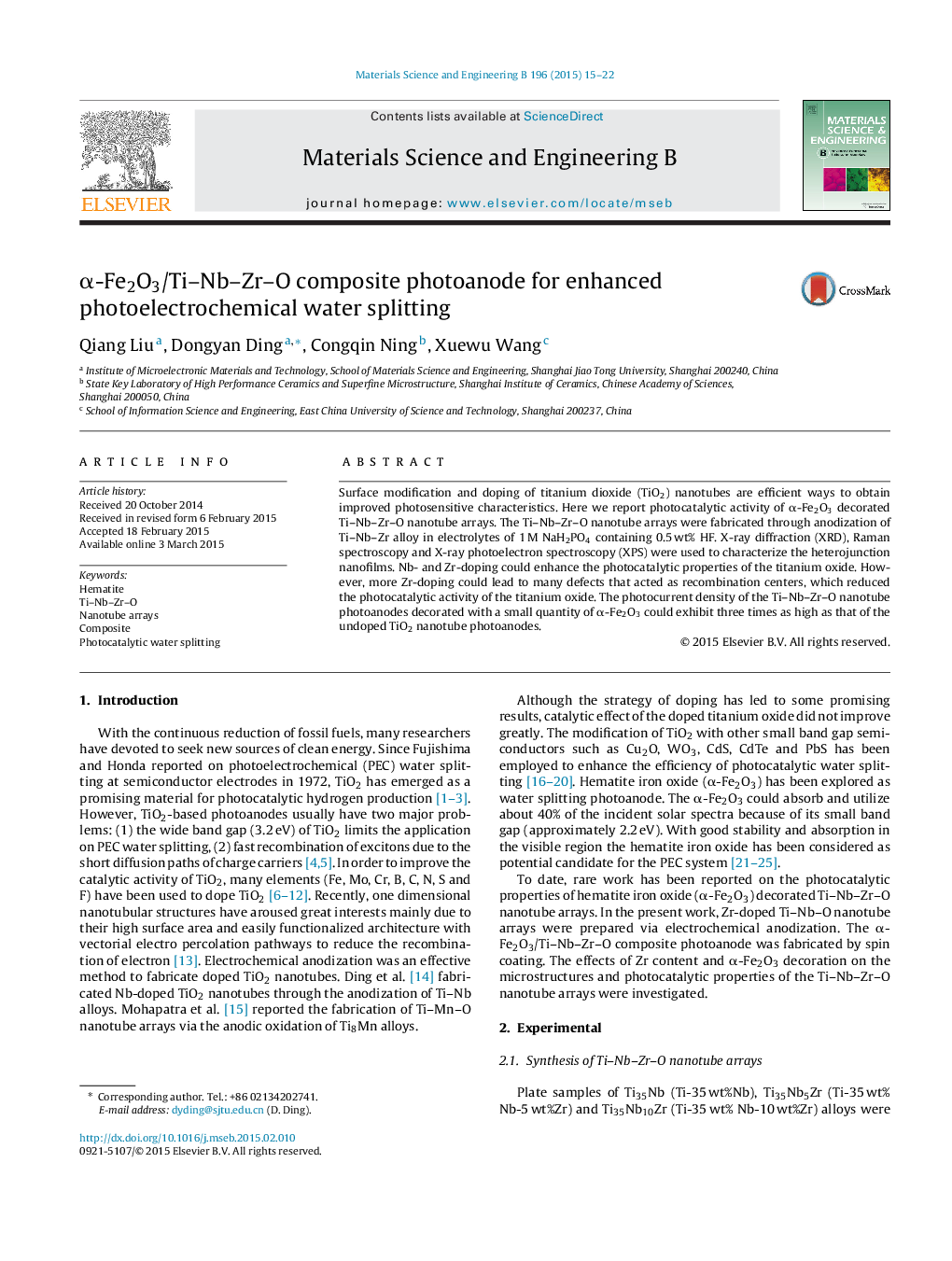| Article ID | Journal | Published Year | Pages | File Type |
|---|---|---|---|---|
| 1528575 | Materials Science and Engineering: B | 2015 | 8 Pages |
Abstract
Surface modification and doping of titanium dioxide (TiO2) nanotubes are efficient ways to obtain improved photosensitive characteristics. Here we report photocatalytic activity of α-Fe2O3 decorated Ti-Nb-Zr-O nanotube arrays. The Ti-Nb-Zr-O nanotube arrays were fabricated through anodization of Ti-Nb-Zr alloy in electrolytes of 1 M NaH2PO4 containing 0.5 wt% HF. X-ray diffraction (XRD), Raman spectroscopy and X-ray photoelectron spectroscopy (XPS) were used to characterize the heterojunction nanofilms. Nb- and Zr-doping could enhance the photocatalytic properties of the titanium oxide. However, more Zr-doping could lead to many defects that acted as recombination centers, which reduced the photocatalytic activity of the titanium oxide. The photocurrent density of the Ti-Nb-Zr-O nanotube photoanodes decorated with a small quantity of α-Fe2O3 could exhibit three times as high as that of the undoped TiO2 nanotube photoanodes.
Related Topics
Physical Sciences and Engineering
Materials Science
Electronic, Optical and Magnetic Materials
Authors
Qiang Liu, Dongyan Ding, Congqin Ning, Xuewu Wang,
